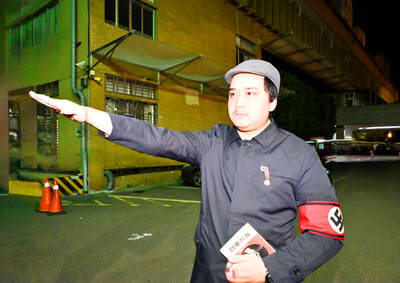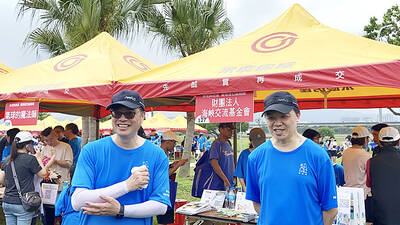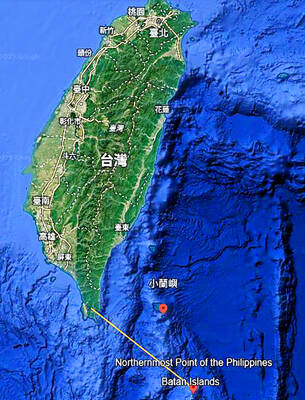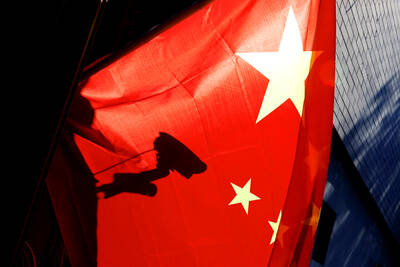Common Health magazine (
Researchers said the finding is no surprise and is a consequence of what it called the government's blinkered preoccupation with economic development over past decades.
Targeting 23 cities and counties and 3,536 residents, the magazine inquired into several issues relating to the environment and living standards, which are considered by the World Health Organization as benchmarks to determine whether a city is healthy.
Taitung, Hualien and Ilan counties are considered by their residents to be the most "suitable" areas to live in; while Kaohsiung County, Kaohsiung City, Taipei County, Taipei City, Taichung County and Taichung City lie at the bottom of the "suitability" rankings.
Residents in Penghu County are the most satisfied with the quality of their security; while those of Taichung City are the least satisfied with theirs.
Ilan County ranks top for "suitability as a place to raise children" and "convenience for the elderly," while Taipei City ranked as the lowest in both categories.
The survey was based on residents' feelings toward their areas but referred also to official statistics.
"There is no champion in this survey," said the magazine's managing editor Michelle Lee
"Areas with better environments suffered economic difficulties. But residents in more prosperous cities complained about unsafe and unhealthy environments."
"The negative impact of Taiwan's unbalanced development shows," added Lee, pointing out that, while Taipei City is considered to be the worst city for children and young people, many parents from outside Taipei still strive to send their children to study in the capital's schools where the educational facilities are considered to be of a higher standard.
Taichung City and Taipei City ranked at the bottom of many of the standings, but nevertheless came first and second for most interviewees faced with the question "Which city would you prefer to live in?" category.
Such apparent inconsistencies in survey results are very common and reflect Taiwan's "twisted" development, according to Hsia Chu-joe (夏鑄九), a professor of city planning at National Taiwan University.
"Taiwan is seriously ill," said Hsia, "It's because of the dominant ideology's focus on economic development over the past 30 years."
"Taiwanese have become slaves of the myth that a government pursuing GNP growth is a good government."
"Our society lacks the capacity for independent thought, "Hsia stressed.
Hsia took Penghu County as an example of failure. He said Penghu Island should logically turn to tourism as a means of economic development, "but all the buildings on the island are too ugly to foster tourism."
"Only sick people would make a city so ugly," he added.
Hsia emphasized that the public should be more aware of the pitfalls of unitary economic development and should maintain awareness of the government's efforts at city planning.
"The citizens' awareness is the only hope for bettering Taiwan."

‘FORM OF PROTEST’: The German Institute Taipei said it was ‘shocked’ to see Nazi symbolism used in connection with political aims as it condemned the incident Sung Chien-liang (宋建樑), who led efforts to recall Democratic Progressive Party (DPP) Legislator Lee Kun-cheng (李坤城), was released on bail of NT$80,000 yesterday amid an outcry over a Nazi armband he wore to questioning the night before. Sung arrived at the New Taipei City District Prosecutors’ Office for questioning in a recall petition forgery case on Tuesday night wearing a red armband bearing a swastika, carrying a copy of Adolf Hitler’s Mein Kampf and giving a Nazi salute. Sung left the building at 1:15am without the armband and apparently covering the book with a coat. This is a serious international scandal and Chinese

SECURITY: As China is ‘reshaping’ Hong Kong’s population, Taiwan must raise the eligibility threshold for applications from Hong Kongers, Chiu Chui-cheng said When Hong Kong and Macau citizens apply for residency in Taiwan, it would be under a new category that includes a “national security observation period,” Mainland Affairs Council (MAC) Minister Chiu Chui-cheng (邱垂正) said yesterday. President William Lai (賴清德) on March 13 announced 17 strategies to counter China’s aggression toward Taiwan, including incorporating national security considerations into the review process for residency applications from Hong Kong and Macau citizens. The situation in Hong Kong is constantly changing, Chiu said to media yesterday on the sidelines of the Taipei Technology Run hosted by the Taipei Neihu Technology Park Development Association. With

A US Marine Corps regiment equipped with Naval Strike Missiles (NSM) is set to participate in the upcoming Balikatan 25 exercise in the Luzon Strait, marking the system’s first-ever deployment in the Philippines. US and Philippine officials have separately confirmed that the Navy Marine Expeditionary Ship Interdiction System (NMESIS) — the mobile launch platform for the Naval Strike Missile — would take part in the joint exercise. The missiles are being deployed to “a strategic first island chain chokepoint” in the waters between Taiwan proper and the Philippines, US-based Naval News reported. “The Luzon Strait and Bashi Channel represent a critical access

COUNTERINTELLIGENCE TRAINING: The ministry said 87.5 percent of the apprehended Chinese agents were reported by service members they tried to lure into becoming spies Taiwanese organized crime, illegal money lenders, temples and civic groups are complicit in Beijing’s infiltration of the armed forces, the Ministry of National Defense (MND) said in a report yesterday. Retired service members who had been turned to Beijing’s cause mainly relied on those channels to infiltrate the Taiwanese military, according to the report to be submitted to lawmakers ahead of tomorrow’s hearing on Chinese espionage in the military. Chinese intelligence typically used blackmail, Internet-based communications, bribery or debts to loan sharks to leverage active service personnel to do its bidding, it said. China’s main goals are to collect intelligence, and develop a